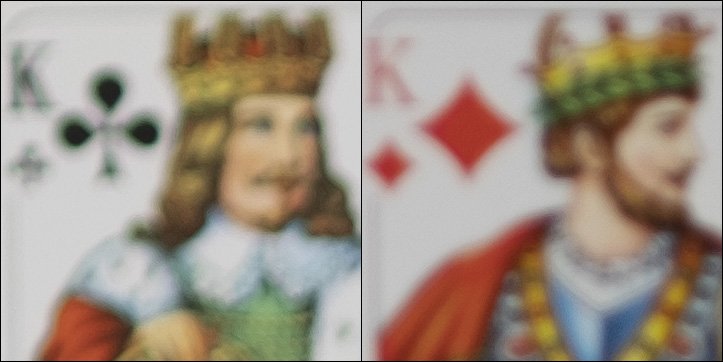|
Viltrox AF 33mm f/1.4 XF (Fujifilm) - Review / Test Report - Analysis |
|
Lens Reviews -
Fujifilm X
|
|
Page 2 of 3

Distortion
As mentioned, Viltrox lenses don't include a build-in correction profile thus you have to live with the raw optical performance. That is unless you take advantage of Viltrox's correction profile (downloadable from the website) which they made available for Photoshop/Lightroom so far
Surprisingly, the distortions produced by the 33mm f/1.4 XF are a little higher compared to the 23mm f/1.4 XF. At 0.6% the pincushion-type distortions aren't dramatic but they can be noticeable in critical scenes. The distortions are fully corrected when using the photoshop profile.
Vignetting
The vignetting characteristic of the Viltrox lens is roughly in line with other high-speed lenses. At f/1.4, there's a pronounced light falloff of 0.9EV (f-stops). However, keep in mind that this is still a far cry from what we can see on full format cameras where similar lenses can have a light falloff over 2EV (exposure values). As usual, stopping down to f/2 helps a lot but if you are holy about vignetting reduction you may prefer f/2.8 and beyond.
If you apply the Viltrox correction profile in Photoshop, the vignetting is basically fully compensated. In fact, it almost looks like that center is darker than the corner thereafter (Imatest probably doesn't show "negative" vignetting numbers here).

MTF (resolution)
The Viltrox AF 33mm f/1.4 XF has two souls when it comes to resolution. The center quality is perfectly fine at large-aperture settings but the outer image field is, unfortunately, soft. The contrast level is also somewhat reduced.
The quality increases substantially at f/2.8 including a lift in contrast. The broader center is very good to excellent and the borders/corners make it to fair levels here. Stopping down further doesn't increase the center performance but the outer image field continues to improve till reaching a good to very good peak quality around the f/5.6 mark. Diffraction is having an impact at f/8 but it only affects the center whereas the border/corner quality is maintained. f/11 sees a global decrease in resolution due to diffraction but that's just physics.
The field curvature is marginal. The centering quality of the tested sample was Okay.
Please note that the MTF results are not directly comparable across the different systems!
Below is a simplified summary of the formal findings. The chart shows line widths
per picture height (LW/PH) which can be taken as a measure for sharpness.
If you want to know more about the MTF50 figures you may check out the corresponding
Imatest Explanations

Chromatic Aberrations (CAs)
Lateral CA (color shadows at the image borders) are well controlled with an average pixel width peaking at just over 1px mark at the image borders at f/1.4. The CAs decrease slightly when stopping down.

Bokeh
Sharpness etc. is one thing but if you invest in such a fast lens, you are usually more interested in shallow depth-of-field photography and the rendering of the bokeh - the out-of-focus blur. And the Viltrox lens is quite good at this.
Out-of-focus highlights are beautifully rendered ("feathered bokeh") in the image center with no outlining and a very smooth inner zone. A more edgy aperture shape is already visible at f/2 - if you look closely - and it's getting more obvious from f/2.8 onward.
 The images below illustrate the deterioration of the out-of-focus highlights towards the image corners. The circular shape is kept across a quite broad image field but you can clearly spot the more ellipsoid shape in the corners. In the grand scheme of things, this is still better than average for such a fast lens though. The corner highlight shape improves quite a bit when taking shots at f/2.8 as you may notice below.
The general rendition in the focus transition zones is generally good with a few harder edge transitions in the image background (crop to the left below) whereas the foreground (to the right) smooth.
The images below illustrate the deterioration of the out-of-focus highlights towards the image corners. The circular shape is kept across a quite broad image field but you can clearly spot the more ellipsoid shape in the corners. In the grand scheme of things, this is still better than average for such a fast lens though. The corner highlight shape improves quite a bit when taking shots at f/2.8 as you may notice below.
The general rendition in the focus transition zones is generally good with a few harder edge transitions in the image background (crop to the left below) whereas the foreground (to the right) smooth.

Bokeh Fringing (LoCA)
Bokeh fringing - also referred to as LoCAs - is a color fringing effect on the Z-axis. It shows up as purplish halos in front of the in-focus zone and greenish beyond. The effect is visible at f/1.4 and f/2 and starts fading at f/2.8 - this is a typical behavior for a non-APO lens.
|